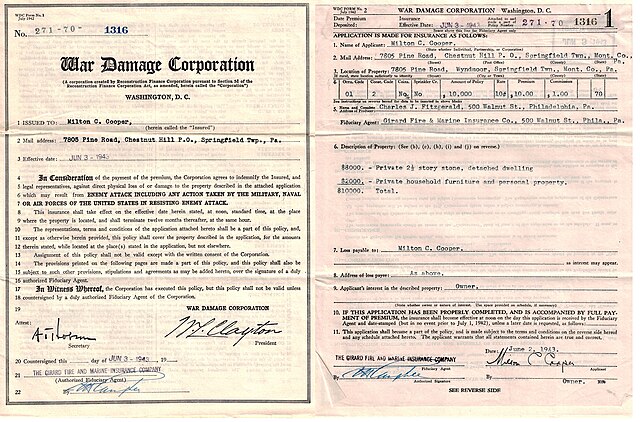Reconstruction Finance Corporation
The Reconstruction Finance Corporation (RFC) was an independent agency of the United States federal government that served as a lender of last resort to US banks and businesses. Established in 1932 by the Hoover administration to restore public confidence in the economy and banking to their pre-Depression levels, the RFC provided financial support to state and local governments, recapitalized banks to prevent bank failures and stimulate lending, and made loans to railroads, mortgage associations, and other large businesses. The Roosevelt administration's New Deal reforms expanded the agency, enabling it to direct disaster relief funds and provide loans for agriculture, exports, and housing. The RFC closed in 1957 when prosperity had been restored and for-profit private financial institutions could handle its mission. In total, the RFC gave US$2 billion in aid to state and local governments and made many loans, nearly all of which were repaid.

A shuttle driver at the Allis-Chalmers Supercharger plant in Milwaukee (October 1942)
An insurance policy issued by the War Damage Corporation in 1943
Acres of World War II aircraft in storage, awaiting their fate at Kingman, 1946
Independent agencies of the United States government
In the United States government, independent agencies are agencies that exist outside the federal executive departments and the Executive Office of the President. In a narrower sense, the term refers only to those independent agencies that, while considered part of the executive branch, have regulatory or rulemaking authority and are insulated from presidential control, usually because the president's power to dismiss the agency head or a member is limited.
The headquarters of the Federal Reserve System
A USPS truck in the snow





